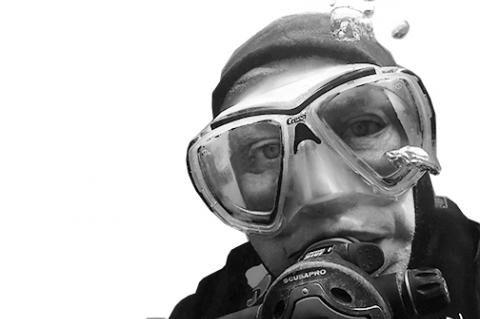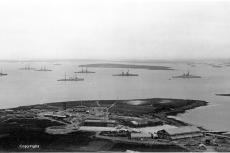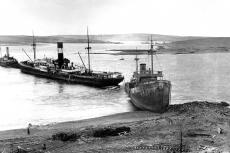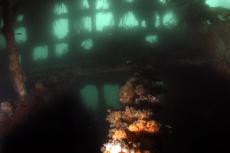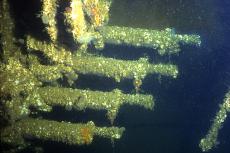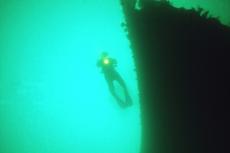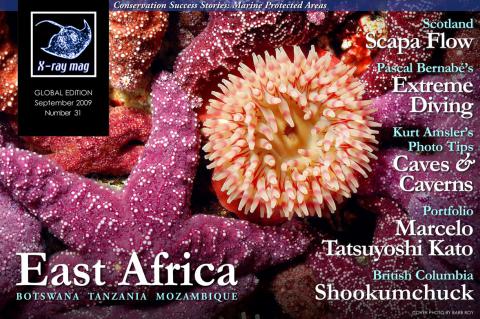Scapa Flow - The Wrecks of Scotland’s Orkney Islands
Situated 25 km (15 miles) north of the Scottish mainland, the Orkney Islands are located on the same latitude as southern Greenland, Alaska and Leningrad, however Orkney is bathed in the warm waters of the North Atlantic Drift that first started out as the Gulf Stream in the Caribbean. Hence, a profusion of marine life, water that rarely gets too cold and mild winters, whilst the islands are inevitable windy, the almost landlocked bay of Scapa Flow is sheltered for diving all year round. The Orkney Islands are created by submergence and give the impression of tipping westwards into the sea. There are great sea stacks, arches, caves and caverns all around the coast, some of which are world famous such as the Old Man of Hoy, and they have a total land mass of around 971.25km2 (375 square miles).
Tags & Taxonomy
More recently, the sheltered bay of Scapa Flow was the base of the British Naval Fleet over several generations and indeed has served the nation well during the Napoleonic War and the American War of Independence.
Orkney had the almost perfect naval base with calm sheltered waters surrounded by protective islands, creating a deep natural harbour first named by the Vikings. Graeme Spence, Maritime Surveyor to the Admiralty said in 1812, “...the art of Man, aided by all the Dykes, Sea Walls or Break-Waters that could possibly be built could not have contained a better Roadstead than the peculiar situation and extent of the South Isles of Orkney have made Scapa Flow ... from whatever point the Wind blows a Vessel in Scapa Flow may make a fair wind of it out to free sea ... a property which no other Roadstead I know of possesses, and without waiting for Tide on which account it may be called the Key to both Oceans.”
To the Orkneys
There is always a sense of mounting excitement as you approach the Orkney Islands by ferry, either from Aberdeen direct to Kirkwall or from Scrabster with landfall at Stromness. The initial huge land mass that looms up out of the early morning mist is the Island of Hoy, and as one approaches the first of several entrances to Scapa Flow, visitors can appreciate why this natural harbour was used by the British Admiralty. In Stromness, we disembark next to the harbour where the majority of Scapa Flow’s fleet of diving boats are based; most are converted fishing trawlers, their skippers and crew eagerly awaiting our arrival.
So what is it that brings the droves of divers from all over the world? Why visit an area, which is not exactly known for its sun-kissed beaches, crystal clear water and palm trees. In fact, I seem to remember the famed Scot’s comedian Billy Connolly complaining that when visiting Orkney, he could not take his dog out to relieve itself because he couldn’t find any trees! The interest is undoubtedly around the fleet of warships sunk deliberately or otherwise during the last two world wars and principally to dive on the German High Seas Battle Fleet, scuttled ninety years ago, in 1919.
The Orkney Islands and specifically the bay of Scapa Flow are home to the largest amount of diveable ...
(...)
Download the full article ⬇︎
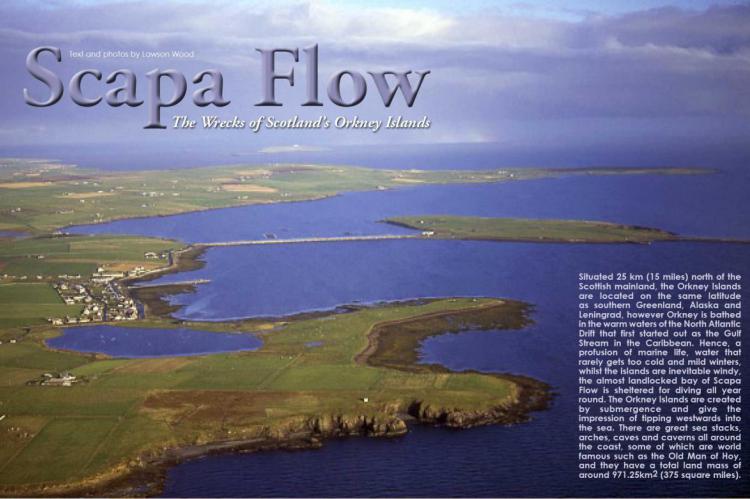
Originally published
X-Ray Mag #31
East Africa: Botswana, Tanzania and Mozambique; Salmon Swim in Paris again; Marine Protected Areas in the Pacific, Scandinavia, Brazil and elsewhere; Record Diver Pascal Bernabés anatomy of a deep exploration; Scapa Flow by Lawson Wood; Sharks are also teenagers; Skokumchuuk rapids; Seeing wrecks with sound; Photographing caves; Japanese Brazilian artist Marcelo Tatsuyoshi Kato; Plus news and discoveries, equipment news, books and media, wrecks, whales, sharks, sea turtles and more...

